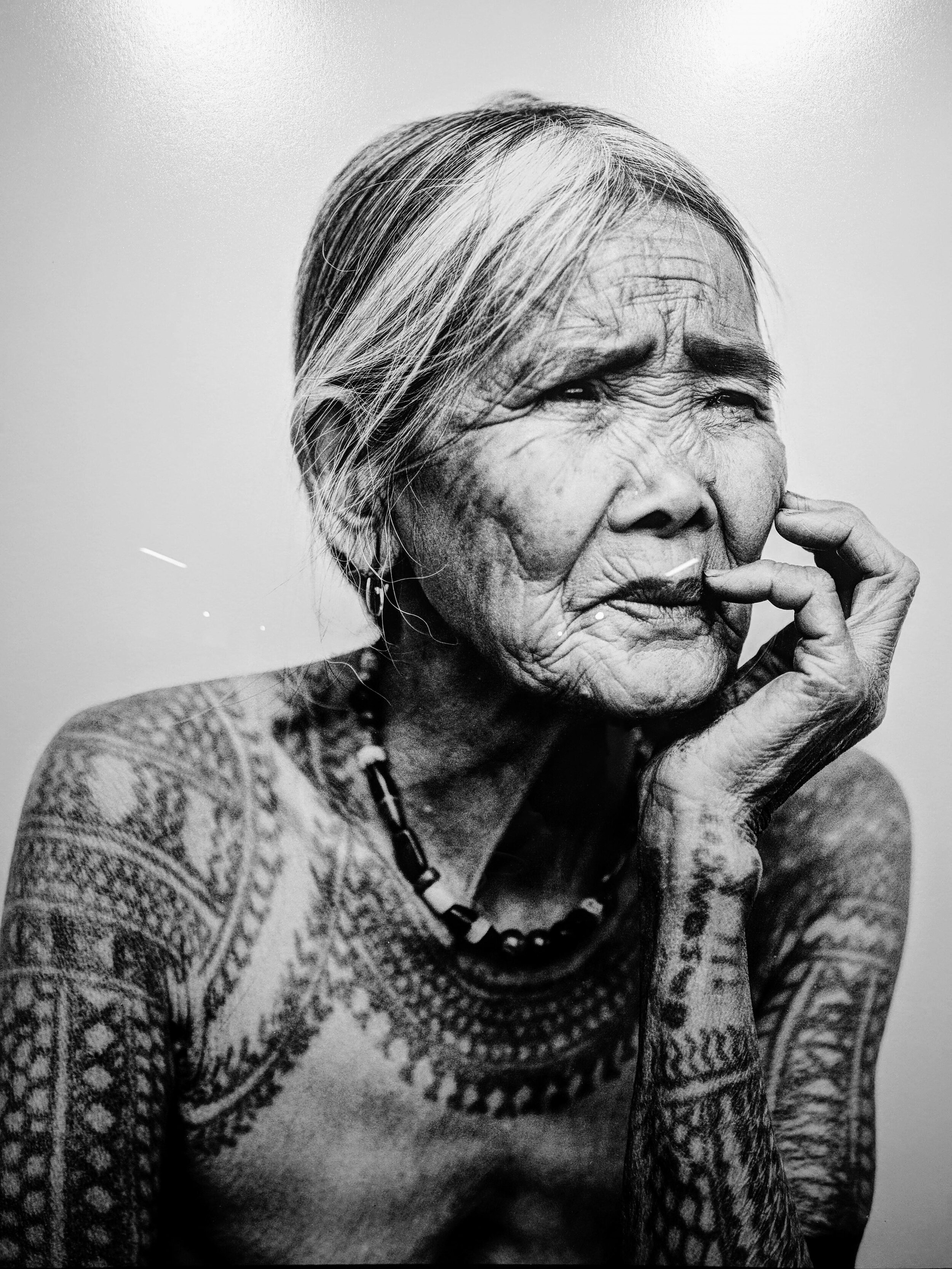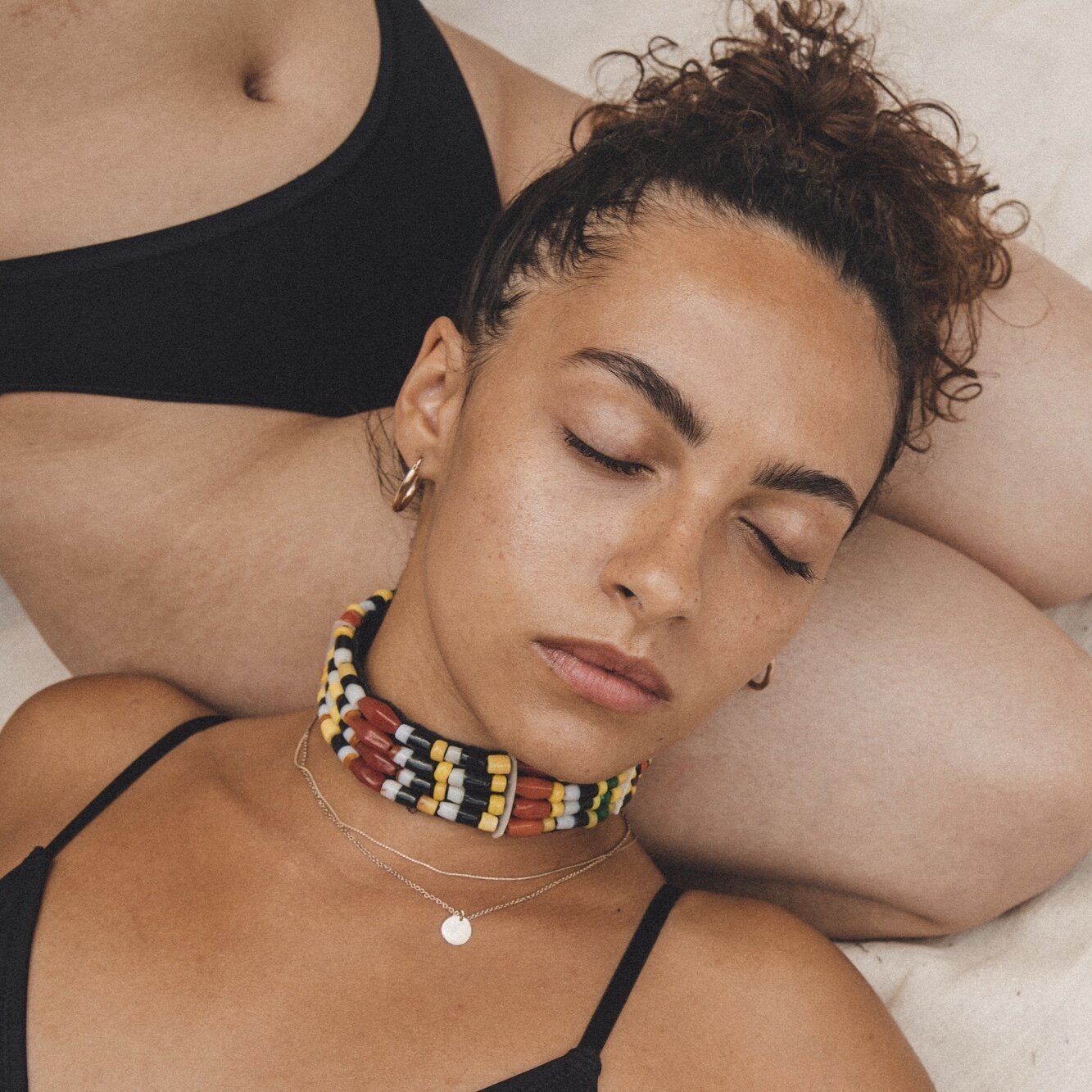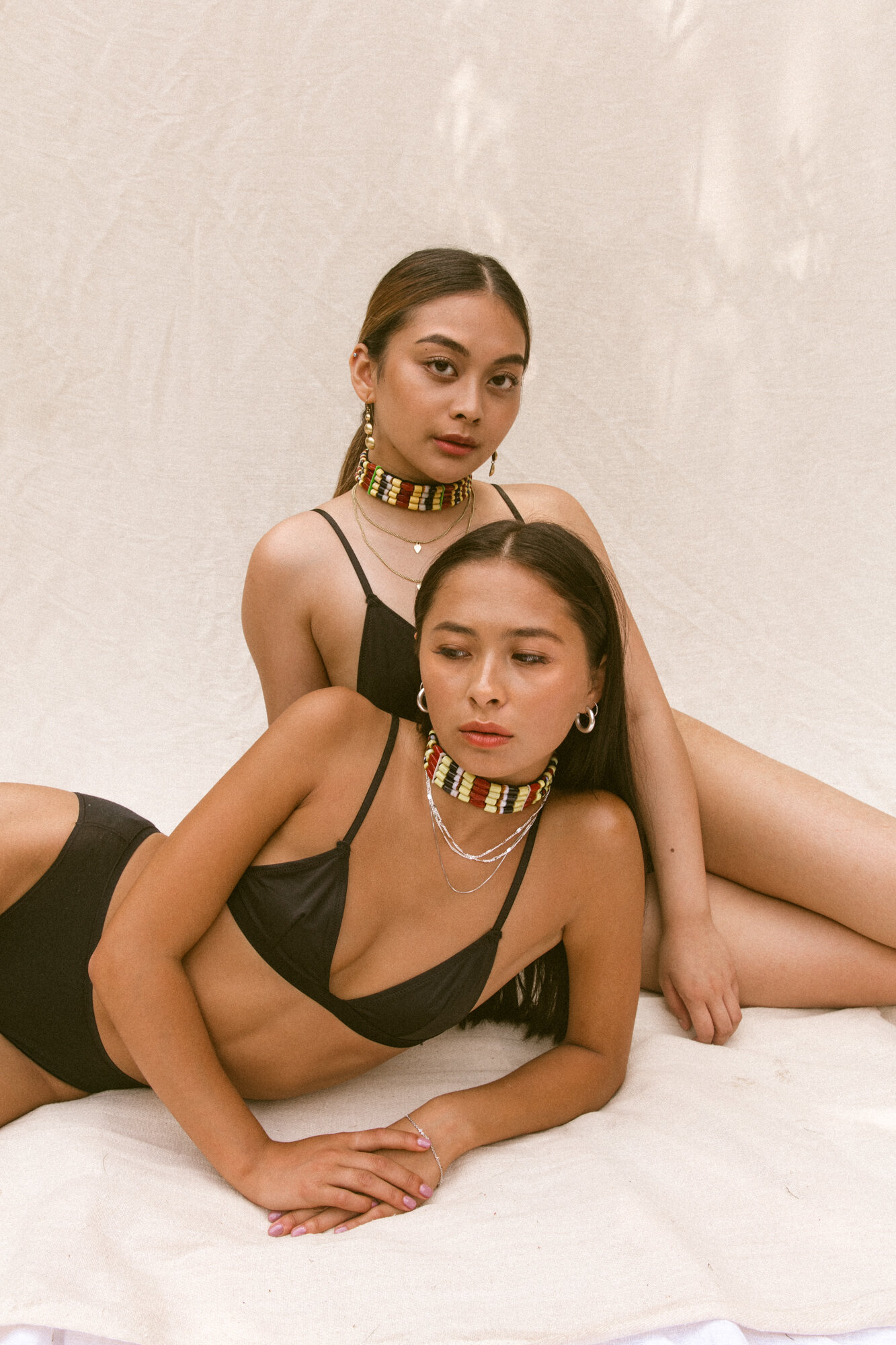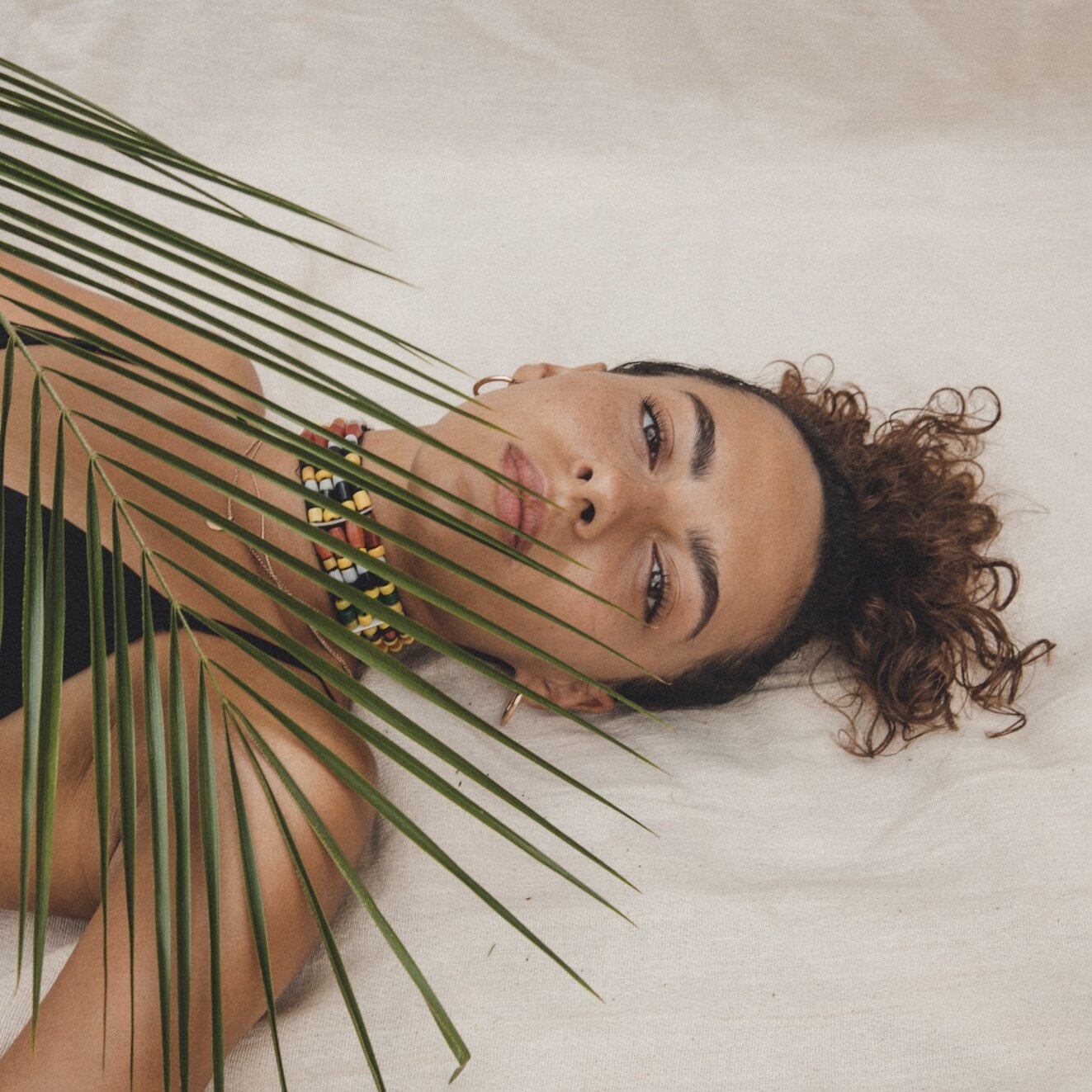The Kalinga Women
Kalinga women are capable. They are comfortably, empoweringly naked. They blur the line between masculine and feminine. They are not objects, they are subjects.
We're deeply moved by the unabashed self-poise inherent to their very existence.
These fierce, iconic women belong to the northern Cordillera ethnic mountain tribes of Luzon, Philippines. The Kalinga.
Kalinga women, including the world-famous Whang-Od, are best known for their tattoos. Culturally they have continued the tradition of adorning their skin with lace-like and tribal patterns or batok which represent beauty, wealth, and stature.
Igorot Beads
In this image series, Claire, Liv and India wear colourful Igorot ("Mountaineer") beads in tribute to the Kalinga women.
Beads themselves are precious heirloom pieces for Kalinga women, who hold the beads sacred. Handed down from generation to generation, beads are an integral part of the Kalinga native social fabric and attire, and the practice of bead making is intimately woven into the lives of its people.
Cirilo Bawer, a schoolteacher and local ethnographer of Lubuagan, says weaving and bead making are among the skills that the Kalinga women have mastered over time. The colours red, yellow, black and white dominate in their bracelet and necklace patterns.
Historians believe that these beads were traded with other commodities like silks, metals, woods and porcelains, and that Kalinga collections in existence today can be traced back to the inception of the global trade of beads to the Philippines.
By incorporating oft-overlooked touchstones of Philippine culture into our creativity, the emotional connection stays alive. We'd recommend doing research on Kalinga women - especially on their tattoos. It makes for fascinating reading.
Image credit:
'Whang-Od Oggay' 1920, Buscalan, Tinglayan, 2011 — © Jake Verzosa
'Young woman smoking a cigar', Buscalan, Tinglayan, Kalinga (anno 1952) — ©️ Eduardo Masferre
'Woman with her pipe.' Butbut, Tinglayan, Kalinga. (anno 1954). — ©️ Eduardo Masferre








